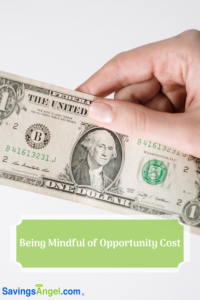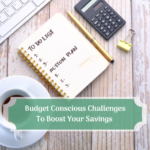Being Mindful of Opportunity Cost

In the age of COVID, it’s no surprise that digital ads have become more and more focused on consumers. Data from your search history helps platforms like Facebook and Instagram to develop curated ads for items targeted towards your interests. This makes indulgent purchasing easier than ever before. We often tell ourselves, “It’s only a few dollars.” Or, we say, “There’s only a few left!” Whatever the case, indulgent spending is rampant these days. That being said, let’s discuss the economic theory of opportunity cost.
What is it?
Opportunity cost is the loss of the benefits you would have gained had you chosen an alternative option. In other words, in this case, the money you could have spent on something more important or even saved and invested. It’s important to weigh the opportunity cost of indulgent expenditures. There are certain behavioral tendencies that ads play off of in consumers. Being self-aware of your spending patterns and what triggers your desire to spend on “wants” and not “needs” is the first step to saving more money by considering opportunity cost.
Be Self-Aware
Recognize these patterns, both in yourself and on social media. Whether you’re making impulsive purchases on Instagram or spending too much each month in general on luxuries you don’t need, figure out where your spending weaknesses stem from. Start monitoring your own behavior, especially around those tailored ads. Recently, I talked about optimizing your cybersecurity privacy by turning off cookies on the websites you’re able to do so. This can help reduce the amount of tailored ads that pop up in your feed, which can in turn reduce the temptation to spend.
Take the time to really get to know yourself and your behavioral patterns when it comes to indulgent spending – you’ll be a step closer to saving more money and better evaluating the opportunity cost of each purchase you make.
Ask Yourself Hard Questions
Now comes the hard part. Once you notice yourself about to purchase something impulsively, ask yourself a set of questions. Come up with your “spending questions” ahead of time and every time you make a purchase, go through this list before clicking “confirm purchase.”
Every individual’s list will be a little different, but the types of questions you should be asking yourself are pretty standard. Do you really need the item? What purpose will it serve? Is it practical? The most important and final question to ask yourself is all about opportunity cost; what could I use this money for if I didn’t buy this thing? Not only that, but start keeping tabs on how much you save when you decide not to buy something. Keep that number somewhere handy and always update it. This can be a great motivator when it comes to deciding against impulsive purchases. Perhaps you can even start putting that money into your savings account instead once you decide against the purchase (e.g. if you can afford to spend this money on something you don’t need, then you can definitely afford to stick it into savings instead.)
All of this isn’t to say that you should never treat yourself. We all need to reward ourselves from time to time. Rather, be more mindful of the purchases you’re making, the money you’re spending, and your purchasing habits as a whole.


